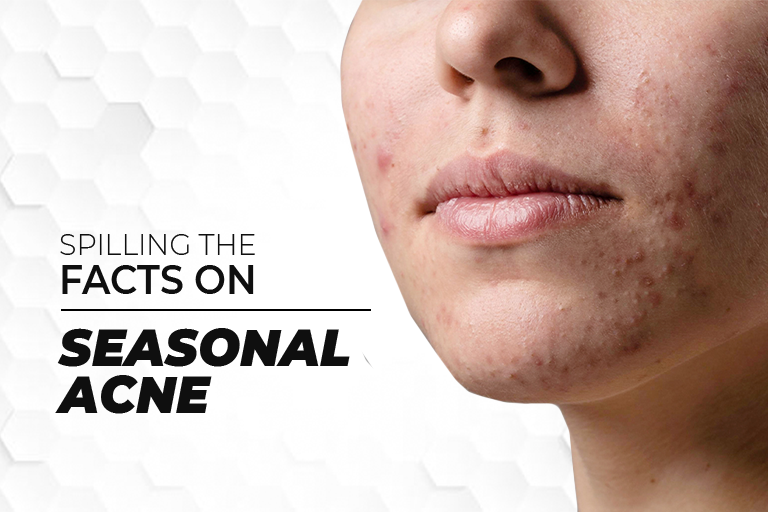
Spilling Facts On Seasonal Acne
As the seasons change, so do our skincare concerns. One such common concern is seasonal acne, which affects many individuals throughout the year. Understanding the causes and triggers of seasonal acne is essential for developing an effective skincare routine and managing breakouts.

The Science of Seasonal Acne:
Acne is a complex skin condition influenced by various factors, including genetics, hormones, and lifestyle choices. However, seasonal changes can exacerbate acne symptoms due to environmental factors, shifts in skincare habits, and dietary variations. Changes in temperature, humidity levels, and exposure to sunlight can all play a role in the development of seasonal acne.

Summer Breakouts:
Summer is a time of increased sun exposure and higher humidity levels. While sunlight can have some positive effects on acne due to its anti-inflammatory properties, excessive sun exposure can also lead to skin dehydration and the thickening of the outermost layer of the skin, known as the stratum corneum. These factors, combined with sweat and increased oil production, can contribute to clogged pores and breakouts.

Monsoon Moisture and Fungal Acne:
Monsoon season, which varies in intensity across different parts of India, brings increased moisture and humidity. The dampness can lead to excessive sweating, trapping dirt and bacteria on the skin's surface. This environment is conducive to the growth of fungi, which can cause fungal acne or pityrosporum folliculitis. To prevent this, it is important to keep the skin clean, avoid excessive sweating, and use antifungal products if necessary.
Post-Monsoon Allergies and Breakouts:
After the monsoon, some regions of India experience a transition period characterized by fluctuating weather conditions. This can trigger seasonal allergies, such as hay fever, which may contribute to acne breakouts. Allergens like pollen can stimulate the release of histamines, leading to inflammation and increased oil production. Managing allergies with antihistamines, avoiding triggers, and maintaining a consistent skincare routine can help minimize breakouts during this time.
Winter Woes:
During the winter months, the air becomes drier, and the lack of moisture can lead to dry and flaky skin. The skin's natural response is to produce more oil to compensate for the dryness, which can clog pores and result in breakouts. Additionally, the increased use of heaters and central heating systems can further strip the skin of moisture, exacerbating acne symptoms.
To manage seasonal acne, it is crucial to adopt a comprehensive skincare routine and make necessary lifestyle adjustments.
Derma Totale is developed keeping in mind Indian skin and seasons! All the products are non-comedogenic and irritation-tested. Our Totale Foaming Facewash efficiently cleanses and removes excessive oil and impurities, Signature Moist PGA gives nourishment and the non-sticky formula retains the right amount of moisture and hydration in the skin. Signature Totale Coolin Sunscreen SPF50+ protects the skin from harmful UV rays, the ultra-lightweight formula makes it a perfect fit for acne-prone skin!
Moreover, paying attention to dietary choices and incorporating foods rich in antioxidants and essential nutrients can contribute to healthier skin.
Understanding the underlying causes of seasonal acne empowers individuals to take proactive measures to prevent and manage breakouts throughout the year. By adapting skincare routines and making lifestyle adjustments according to seasonal variations, it is possible to maintain healthy, acne-free skin. Remember, consistency and patience are key when it comes to achieving clearer skin in every season.


